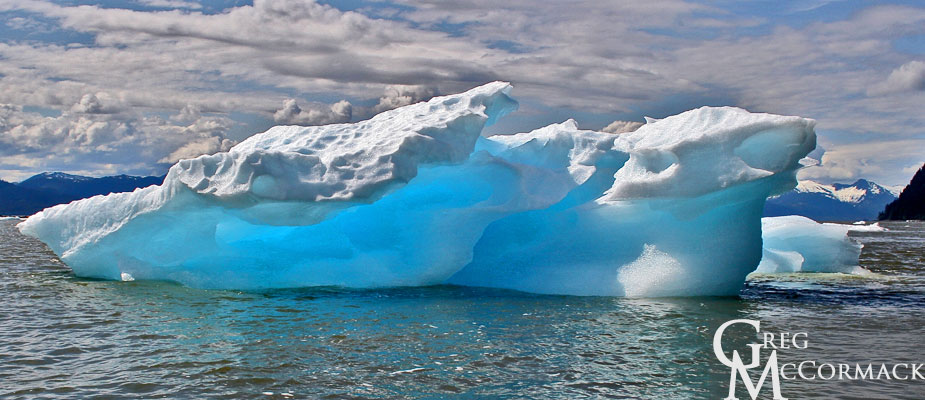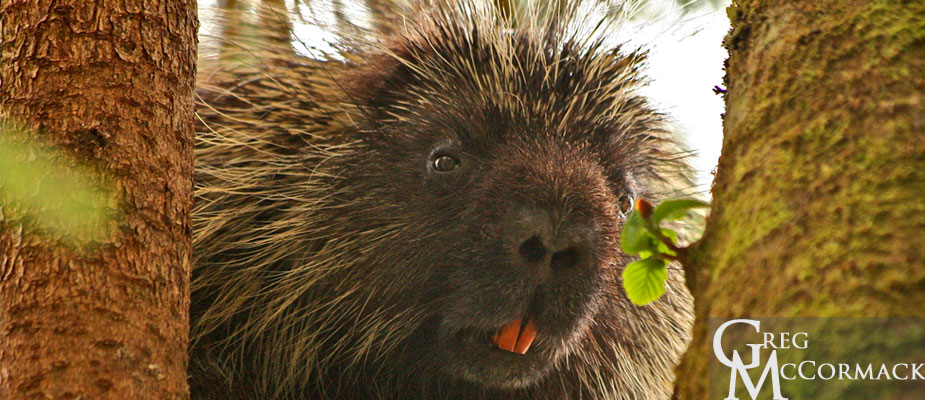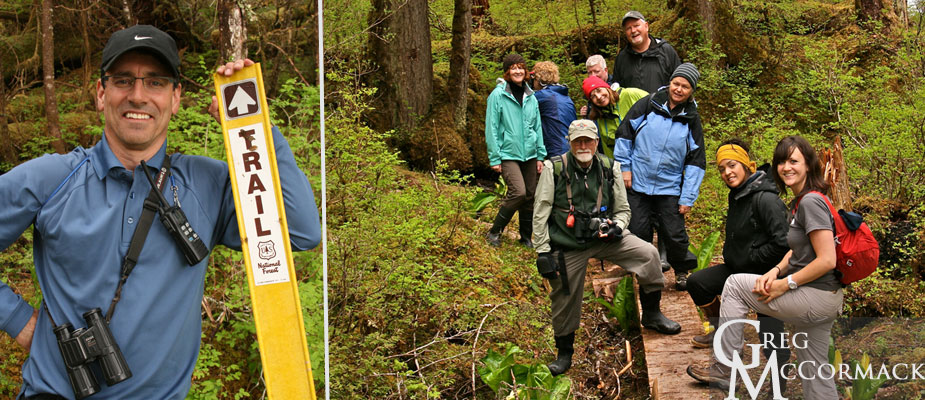Monday | May 23rd
July 1, 2011 by admin
Filed under InnerSea Discoveries
Up at 5:15am and departing to go ashore at the Baird Glacier by 6:15 a.m. It takes 30 minutes in a cold drizzle to get up the very shallow bay and glacial river to a not-so-steep bank to disembark adventure-seekers. A couple of our boat props were dinged on unseen boulders. In fact, the glacial flour was so thick and in suspension in the water column that visibility was perhaps only 6 inches at best.
Randall scouts the route while I interpret the dynamic landscape in front of the snout of the glacier. “Take your fist and push your stomach in…now release your fist and tell me what happens to your stomach? It rebounds back out. This is an example of what is called isostatic rebound.
Has anyone ever shoveled snow before and found out that snow is heavy? Glaciers are made of snow that has been converted to ice. Ice is a mono-mineral like calcite, so snow can be considered to be “sedimentary” rock whereas the snowball you want to throw at your enemy you add heat and pressure in your hands to turn it into ice, or metamorphosed rock.
Heavy weight has compressed the earth. When the glaciers lose mass, the Earth rebounds at rates of up to 1.5 inches a year or more.

New land is being created and colonized by lichens, mosses, herbs and shrubs like the pioneering mountain avens and alder trees which prepare the soil for the spruce and hemlock.

We cross a lunar-like landscape in which we see evidence of “uniformitarianism”, the concept that “the present is the key to the past”. Erosional processes and ablation (melting and wastage) of the Baird glacier was evident as we walked in front of and onto the snout of the glacier over the “push” or terminal moraine. Some of the glacier flour and mud was so thick that “liquefaction” occurred directly under our boots, similar to what hardened Jell-o might feel.

The whole appearance of the moraine is of a giant gravel pit that has been worked over by 1,000 bulldozers moving without any coordination. The out-flow river that came out of the side of the glacier near a lateral moraine sounded like a giant rock-tumbler machine. The granitic rocks were amazingly rounded without any edges, evidence that the material had been worked over many times over the last 3.5 million years during the Pleistocene.
Even before we put on our “yak-tracks” cramp-ons onto our boots it was obvious that great pieces of the glacier had calved off beneath our feet within the matrix of the unconsolidated debris, such as gravels, silts and clays that had been plucked by the glacier upon its descent from the Stickeen Icefield 12 miles up-valley.
Across the outwash plain the long-distance champion migrant Arctic Tern was calling out in raspy notes and flying gracefully and buoyantly upon the lifting mists, their white mantle glistening in sunlight from a deepening blue hole in the once overcast sky.

